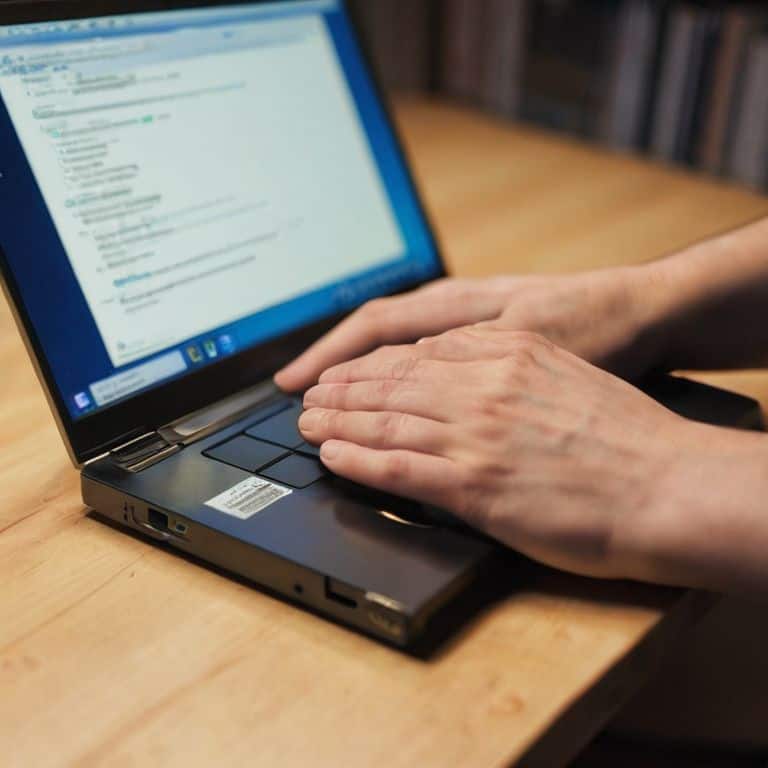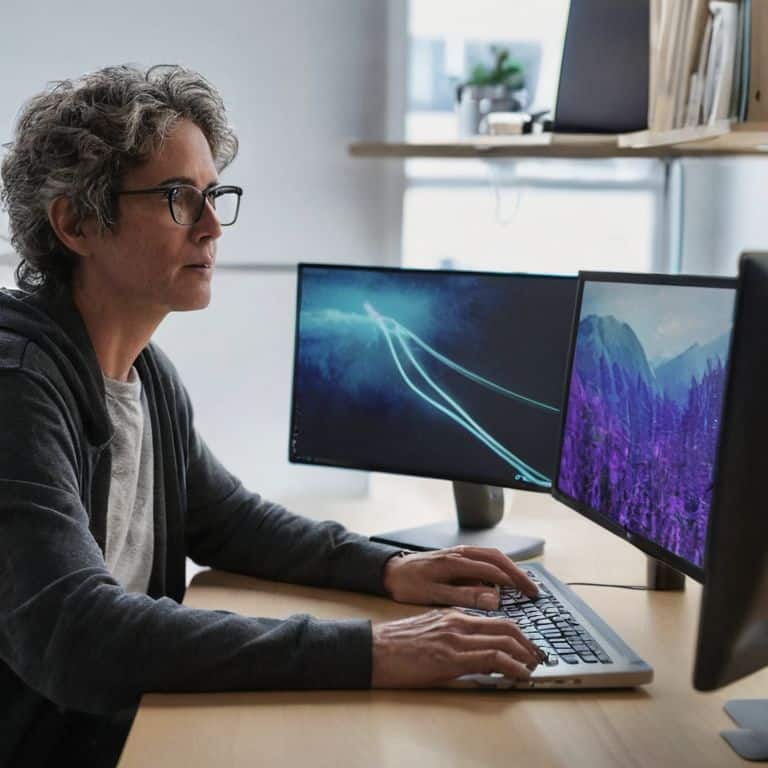I still remember the frustration I felt when I first tried to transfer files from my old computer to a new one. It was like trying to move all my belongings from one house to another without a clear plan. I had heard all sorts of horror stories about lost files, corrupted data, and endless hours spent troubleshooting. But, as it often turns out, the truth is much simpler than the myth. The process of moving your files to a new computer is actually quite straightforward, and with the right guidance, you can do it yourself without needing to be a tech expert.
In this article, I’ll walk you through the step-by-step process of how to transfer files from an old computer to a new one. I’ll share my personal experience, and provide you with practical tips and easy-to-follow instructions to make the transition as smooth as possible. You’ll learn how to prepare your old computer, choose the best transfer method for your needs, and troubleshoot any issues that may arise. By the end of this guide, you’ll be confident in your ability to transfer your files safely and efficiently, and start enjoying your new computer without worrying about losing your important documents and memories.
Table of Contents
Guide Overview: What You'll Need

Total Time: 1 hour 30 minutes
Estimated Cost: $0 – $20
Difficulty Level: Easy
Tools Required
- External Hard Drive (or a cloud storage account)
- USB Flash Drive (with sufficient storage space)
- Ethernet Cable (for a wired connection)
- Internet Connection (for cloud transfer)
Supplies & Materials
- Transfer Cable (for direct computer-to-computer transfer)
- Cloud Storage Subscription (optional, for additional storage space)
Step-by-Step Instructions
- 1. First, don’t panic! Before we start transferring files, make sure you have all the necessary cables and adapters for both your old and new computers. This includes USB cables, HDMI cables, and any other connectors you might need. Take a few minutes to gather everything and place it within easy reach to avoid any last-minute scrambles.
- 2. Next, turn on both your old and new computers and let them boot up completely. This is a good time to familiarize yourself with the new computer’s operating system, even if it’s just browsing through the settings or exploring the desktop. On your old computer, navigate to the files you want to transfer and make a mental note of their locations.
- 3. Now, let’s talk about the transfer method. You have a few options, including using an external hard drive, cloud storage, or a direct cable connection. For this guide, we’ll focus on using an external hard drive, as it’s often the most straightforward method. If you don’t have an external hard drive, don’t worry; you can also use a large USB flash drive as an alternative.
- 4. Connect your external hard drive to your old computer using a USB cable. Once it’s recognized by the system, you can start copying your files. Navigate to the folders containing the files you want to transfer, right-click on them, and select “Copy” (or use the keyboard shortcut Ctrl+C). Then, open the external hard drive’s folder, right-click inside it, and select “Paste” (or use Ctrl+V) to start the copying process.
- 5. Depending on the size of your files and the speed of your external hard drive, this process could take anywhere from a few minutes to several hours. It’s a good idea to monitor the progress and ensure that all files are copied correctly. Once the transfer is complete, safely eject the external hard drive from your old computer to avoid any data corruption.
- 6. Now, connect the external hard drive to your new computer and follow the same process to paste your files into their desired locations. You might want to create new folders or organize your files in a way that makes sense for your new system. Remember, this is a great opportunity to reorganize your digital life and maybe even back up some of those files to cloud storage for extra safety.
- 7. After you’ve transferred all your files, take some time to verify everything. Open documents, look at photos, and play some music to ensure that all your files are intact and functioning as expected. This step is crucial in identifying any potential issues early on, such as file corruption or missing formats.
- 8. Finally, consider setting up backups on your new computer. Whether you use an external hard drive, cloud services, or both, having a solid backup plan in place will protect your files from future data loss. Most operating systems offer built-in backup tools, or you can explore third-party software options that fit your needs and budget.
Transfer Files With Ease

When transferring operating system settings, it’s essential to consider the compatibility of your old and new computers. This can be a bit like trying to put a new engine in an old car – it might not fit perfectly, and you’ll need to make some adjustments. To make the process smoother, I recommend backing up data before transfer to ensure nothing gets lost in the transition.
Using a USB for file transfer can be a convenient option, especially for larger files. However, if you have a lot of files to transfer, transferring files over wifi network might be a better choice. This method can be more efficient, especially if you have a fast internet connection. Additionally, consider using cloud based file migration services to simplify the process and access your files from anywhere.
To take it to the next level, you can also look into migrating applications to new computer. This can save you time and hassle in the long run, as you won’t need to reinstall all your favorite programs. By following these tips, you’ll be well on your way to a seamless file transfer experience, and you can enjoy your new computer without worrying about losing any important data.
Cloud Transfer Made Simple
Don’t Panic! Cloud transfer is a breeze. Imagine your files are like passengers in a car – you need to get them from one vehicle (old computer) to another (new computer) safely. Cloud services like Google Drive, Dropbox, or OneDrive are like convenient shuttle buses. Simply upload your files to the cloud from your old computer, then download them to your new one. It’s like driving your passengers to a common meeting point, where they can easily switch to their new ride.
I recommend using the same cloud account on both computers to keep things simple. Just sign in, upload from the old computer, and download to the new one. You can even use the cloud to transfer settings and apps, making the transition even smoother. Think of it like giving your passengers a map to their new destination – they’ll arrive hassle-free, and you’ll be relieved.
Migrate Apps and Settings
Now that we’ve got your files moved, let’s talk about migrating your apps and settings. This is where things can get a little tricky, but don’t worry, I’ve got you covered. Think of it like tuning up your car – you want to make sure everything is running smoothly and efficiently. For your apps, you’ll likely need to reinstall them on your new computer, but most will allow you to sign in and access your previous settings and data.
I recommend making a simple checklist of the apps you use regularly and their corresponding settings, so you can easily replicate them on your new computer. This will save you time and frustration in the long run. By taking a few extra minutes to migrate your apps and settings, you’ll be up and running in no time, with everything just the way you like it.
Don't Panic! 5 Essential Tips for a Smooth File Transfer

- Verify Your Old Computer’s Backup: Before you start transferring files, make sure your old computer is backed up to an external drive or cloud storage to prevent data loss
- Use the Correct Cables: Ensure you have the right cables to connect your old and new computers, such as USB or Ethernet, to facilitate a direct transfer
- Organize Your Files: Take this opportunity to tidy up your digital life by organizing your files into clear folders and categories, making them easier to find on your new computer
- Check for Compatibility: Be aware that some files, especially those from older software, might not be compatible with your new computer’s operating system, so have a plan for how to handle these
- Double-Check Your Transfer: Once you’ve completed the transfer, take a few minutes to verify that all your important files have been successfully moved and are accessible on your new computer
Key Takeaways for a Smooth File Transfer
Don’t Panic! With a little planning, you can transfer your files from an old computer to a new one without losing any important data – think of it like giving your car a new paint job, the engine remains the same, but it gets a fresh new look
Remember, transferring files is as simple as mapping a road trip: you need to know where you’re starting from (your old computer), where you’re going (your new computer), and the best route to take (which transfer method to use), such as using an external hard drive or cloud storage
By following these steps and taking your time, you’ll be enjoying your new computer with all your files safely transferred in no time – and if you get stuck, just refer back to our simple checklist, designed to keep you on track and trouble-free, just like having a trusty GPS navigation system
Transferring Files with Confidence
Moving to a new computer shouldn’t feel like leaving your digital life behind – with the right steps, you can bring everything with you and hit the ground running.
David Fletcher
Wrapping Up: You're Now a File Transfer Master
As we’ve gone through this journey together, you’ve learned how to seamlessly transfer files from your old computer to your new one. We’ve covered the essential steps, from preparing your old computer to setting up your new one, and even explored how to migrate apps and settings with ease. You’ve also discovered the simplicity of using cloud services for file transfer, making the process incredibly straightforward. By following these steps, you’ve not only moved your files but also taken a significant step in making your technology work for you, not against you.
Now that you’ve completed the transfer, take a moment to feel a sense of accomplishment. You’ve overcome what might have seemed like a daunting task, and you should be very proud of yourself. Remember, technology is here to make our lives easier, and with patience and the right guidance, you can master any tech challenge that comes your way. Keep exploring, stay curious, and never hesitate to reach out when you need help navigating the world of technology.
Frequently Asked Questions
What if my old computer won't turn on, can I still transfer my files?
Don’t Panic! If your old computer won’t turn on, you can still rescue your files. Try removing the hard drive and connecting it to your new computer using a USB adapter, or enlist a pro’s help to recover your data. Think of it like jumpstarting a car – we can bypass the old engine to get your files running on the new one.
How do I ensure that all my files are transferred correctly and nothing is left behind?
Don’t Panic! To ensure everything is transferred, double-check your old computer’s folders, like Documents, Pictures, and Videos, and compare them to your new one. Make a simple checklist to keep track of what’s been moved.
Are there any specific precautions I should take to protect my files from being corrupted or lost during the transfer process?
Don’t Panic! To keep your files safe, always verify the transfer progress, and consider creating a backup before starting. Think of it like checking your car’s oil before a long trip – it’s a simple step to avoid bigger problems down the road.









